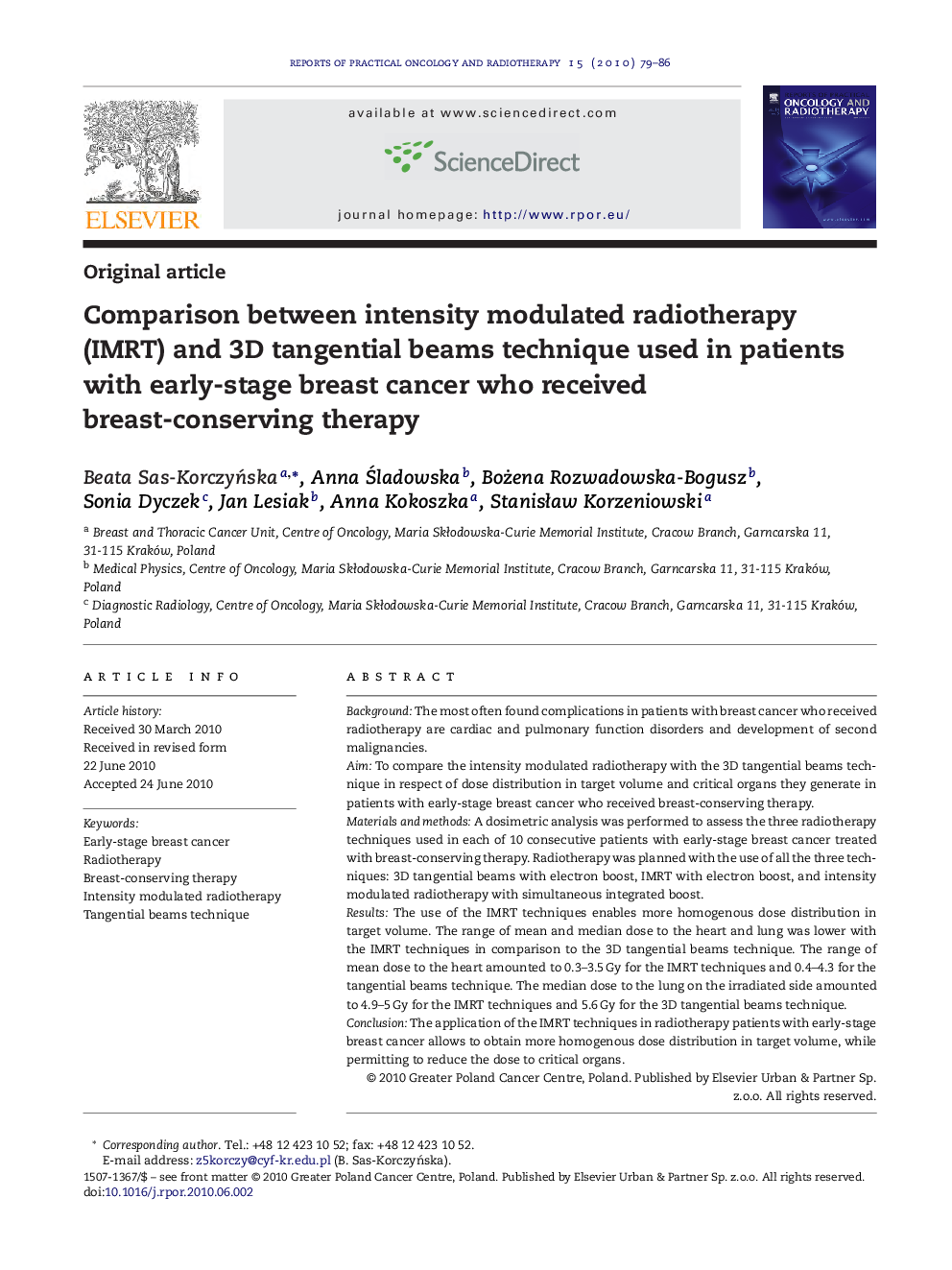| Article ID | Journal | Published Year | Pages | File Type |
|---|---|---|---|---|
| 1857142 | Reports of Practical Oncology & Radiotherapy | 2010 | 8 Pages |
BackgroundThe most often found complications in patients with breast cancer who received radiotherapy are cardiac and pulmonary function disorders and development of second malignancies.AimTo compare the intensity modulated radiotherapy with the 3D tangential beams technique in respect of dose distribution in target volume and critical organs they generate in patients with early-stage breast cancer who received breast-conserving therapy.Materials and methodsA dosimetric analysis was performed to assess the three radiotherapy techniques used in each of 10 consecutive patients with early-stage breast cancer treated with breast-conserving therapy. Radiotherapy was planned with the use of all the three techniques: 3D tangential beams with electron boost, IMRT with electron boost, and intensity modulated radiotherapy with simultaneous integrated boost.ResultsThe use of the IMRT techniques enables more homogenous dose distribution in target volume. The range of mean and median dose to the heart and lung was lower with the IMRT techniques in comparison to the 3D tangential beams technique. The range of mean dose to the heart amounted to 0.3–3.5 Gy for the IMRT techniques and 0.4–4.3 for the tangential beams technique. The median dose to the lung on the irradiated side amounted to 4.9–5 Gy for the IMRT techniques and 5.6 Gy for the 3D tangential beams technique.ConclusionThe application of the IMRT techniques in radiotherapy patients with early-stage breast cancer allows to obtain more homogenous dose distribution in target volume, while permitting to reduce the dose to critical organs.
